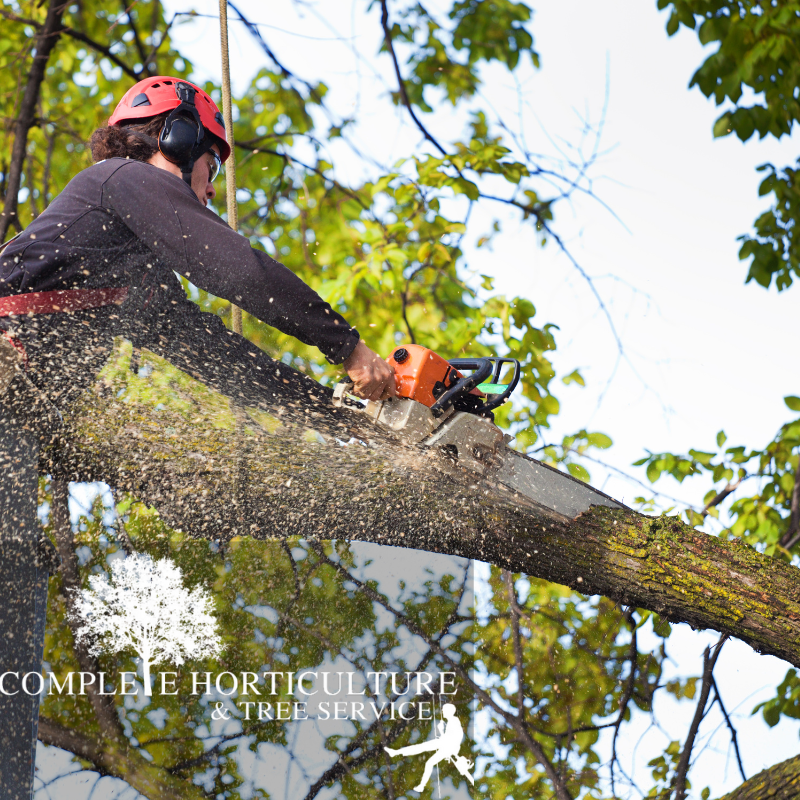In North Georgia, mature trees are one of the most beautiful parts of a well-designed landscape. They provide shade, privacy, curb appeal—and in many cases, they’ve been growing on the property for generations. But not every tree is a safe tree. In fact, ignoring early warning signs can put your home, family, and even your neighbors at risk.
At Complete Horticulture & Tree Service, we’ve seen firsthand how a hazardous tree can turn into a costly and dangerous situation. From uprooted oaks after a summer thunderstorm to decayed pines that suddenly collapse in a quiet backyard, most of these incidents could have been prevented with routine inspection and timely removal.
Below are five clear warning signs that a tree may pose a threat to your property. If you notice any of these, it’s time to call in a certified tree removal professional to assess the situation.
1. Visible Lean or Sudden Tilt
Not all leaning trees are an immediate danger—some naturally grow at an angle. But if your tree has recently started to lean, or if the tilt seems to have worsened after a storm, that’s a red flag.
Leaning trees may indicate compromised roots or a shifting base. If the soil around the base of the tree looks lifted or cracked—especially on the opposite side of the lean—this could mean the root system is failing. That’s a serious issue and needs immediate attention, particularly if the tree is close to your house, driveway, or power lines.
Local Tip: Georgia’s red clay soil doesn’t drain well, and after prolonged rains, trees can become more prone to uprooting due to soft, waterlogged ground.
2. Cracks or Splits in the Trunk
Deep cracks in the trunk or large splits where limbs attach are more than just cosmetic problems. These can be stress fractures caused by wind, lightning, or years of unnoticed decay.
A split trunk weakens the tree’s structural integrity, making it more likely to break apart in strong winds or under its own weight. You might even see bark peeling away from these cracks, or oozing sap—both indicators that the tree is under stress.
If you’re hearing loud cracking or popping noises from your tree during windstorms, it’s a sign that the tree may be trying to give way.
3. Dead or Hanging Limbs
Dead branches can fall without warning—even on calm days. If you see limbs with no leaves during the growing season, or branches that look brittle and dry, they may already be dead.
Large, dead limbs hanging over your roof, patio, or driveway are particularly dangerous. In addition to the risk of damage, falling limbs can cause serious injury to people or pets. These are often referred to as “widowmakers” in the tree care industry, and for good reason.
It’s also important to look up. If the upper canopy (crown) of your tree has a significant number of dead limbs, this may be a symptom of a larger issue—like internal disease or root failure.
4. Fungus or Decay at the Base
A tree’s base, or root flare, should be firm and solid. But if you notice mushrooms or fungal growth around the trunk, especially near ground level, it could signal internal rot.
Fungal growth means the tree is decaying from the inside out. Soft, spongy wood, holes in the trunk, or cavities near the base are signs the tree is breaking down structurally.
While a tree might appear healthy on the outside, decay can make it hollow and unstable. Trees in this condition are often among the first to fall in heavy winds or under their own weight.
Pro Tip: If you can push a screwdriver easily into the wood near the base, the tree may be structurally compromised.
5. Root Damage or Soil Movement
Roots are the foundation of every tree. When they’re damaged, the entire tree becomes unstable.
Root damage can happen during construction, heavy equipment use, or even from repeated soil compaction. Signs of root problems include:
-
Mushy soil around the base
-
Tree tilting or heaving
-
Exposed roots pulling away from the soil
-
Limited foliage or leaf discoloration
Because most roots are underground, it can be difficult to see what’s going on. But any major disruption to the area around a tree’s base should be a reason for concern, especially if the tree has already begun to lean or drop branches.
What To Do If You Spot These Warning Signs
If any of these symptoms apply to a tree on your property, don’t wait for disaster to strike. A falling tree can cause tens of thousands of dollars in damage—not to mention put lives at risk.
Here’s what we recommend:
-
Schedule a professional tree assessment. Our team at Complete Horticulture & Tree Service provides expert evaluations and can help determine whether your tree needs pruning, cabling, or removal.
-
Avoid DIY inspections. Hazardous trees are unpredictable, and getting close to inspect cracks or limbs can be dangerous.
-
Act quickly. Trees that show signs of decay or instability can fail at any time, even without a storm.
Trust the Tree Experts in Canton, GA
At Complete Horticulture & Tree Service, we specialize in hazardous tree removal, tree risk assessments, and full-service landscaping. Our team knows the challenges that come with North Georgia’s trees and terrain, and we’re proud to serve homeowners who value safety, beauty, and peace of mind.
If you’re concerned about a tree on your property—or just want peace of mind—give us a call today. We’re local, experienced, and fully equipped to protect what matters most.
📍 Serving Canton, Woodstock, Milton and surrounding areas.
📞 770-243-3984
🌐 completehorticulture.com

